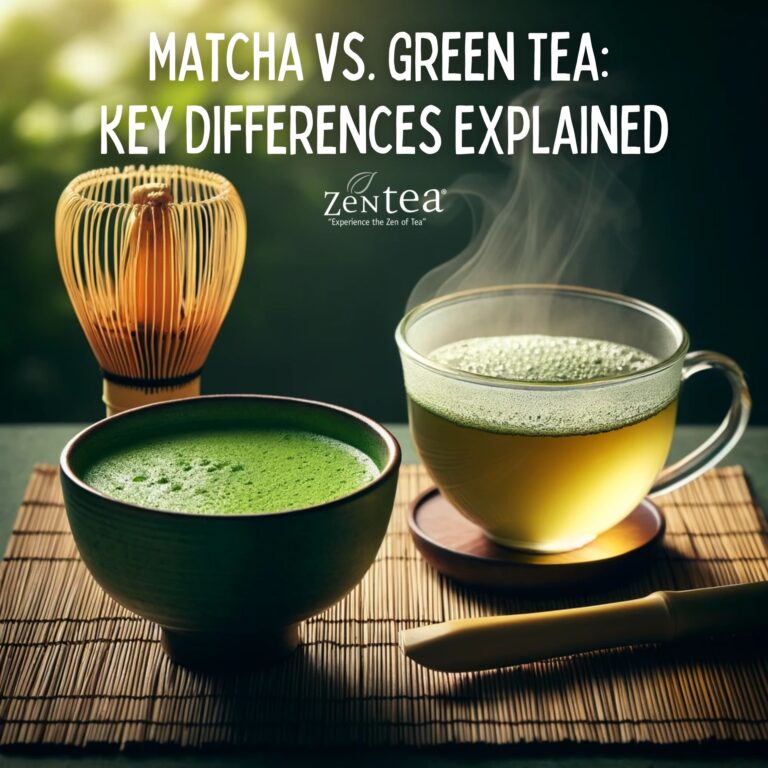Matcha vs. Green Tea: Key Differences Explained
Matcha vs. Green Tea: Understanding the Differences
Tea enthusiasts often debate the merits and distinctions between matcha and green tea. While both come from the same plant—Camellia sinensis—their cultivation, processing, and nutritional profiles differ significantly. At ZenTea in Chamblee, GA, we offer both matcha and traditional green teas, each with its unique characteristics. This guide will help you understand these differences and choose the right tea for your lifestyle. Explore our selections at ZenTeaCo.com.

Green tea, on the other hand, is grown in direct sunlight and is harvested more frequently, which influences its catechin content, contributing to a slightly bitter flavor. The leaves are typically steamed (in the case of Japanese green teas like sencha) or pan-fired (as with Chinese green teas), rolled, and dried. This process preserves the green color and delivers a fresher, grassier taste compared to other tea types.
Green tea, while lower in antioxidants compared to matcha, is still a great source of these healthful compounds and offers benefits such as improved brain function and fat loss. Both teas contain caffeine, but matcha generally has more due to the concentration of leaves consumed in powder form.
Green tea offers a variety of flavor profiles depending on its type and origin. For instance, ZenTea’s Green Lung Ching Super Fine Tea provides a smooth, clean taste with a subtle sweetness, perfect for those who prefer a lighter beverage.
Whether you choose matcha or green tea, both offer significant health benefits and enjoyable flavors. At ZenTea in Chamblee, GA, we provide a variety of high-quality matcha and green teas to suit any palate. Visit us at ZenTeaCo.com to explore our selections and find your perfect cup of tea.
Matcha vs Green Tea, Health Benefits of Tea, ZenTea, Tea Education, Chamblee GA
Related posts
“Mastering the Art of Brewing the Perfect Cup of Tea”
Brewing Perfection: Discover the Art of Tea at ZenTea in Chamblee, GA In the heart of Chamblee, GA,
Tea and Mental Clarity: Unleashing Focus and Productivity with ZenTea
Unlock Mental Clarity with ZenTea: Boost Focus and Productivity Naturally In the fast-paced world we
Green Tea: A Deep Dive into Its Health Benefits
Green Tea Benefits: Unlocking Wellness Secrets – ZenTeaCo.com In our quest for health and vita
Herbal Teas: Unveiling the Mystique of Their Historical Origins
Herbal Teas: Tracing the Roots of an Ancient Tradition The story of herbal teas is as rich and varie
